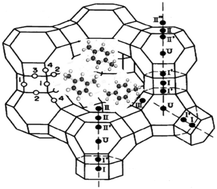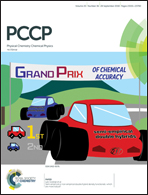Quantitative structure–property relationship approach to predicting xylene separation with diverse exchanged faujasites†
Abstract
Streamlining the xylene separation process on faujasites is a promising way to design innovative adsorbents for this application. For this purpose, we present herein an original quantitative structure–property relationship (QSPR) approach. It deals with the development of a multi-linear predictive model correlating the separation properties with a set of structural descriptors for the adsorbents. The implementation of such an approach makes it necessary to (i) set an appropriate design of experiment (DOE), (ii) prepare an adsorbent database, (iii) test the adsorbent database for xylene separation and (iv) compute a set of relevant descriptors. The selected descriptors essentially characterize the nature of the confinement in the faujasite supercage, i.e., the size of the cations localized in adsorption sites II, as well as the occupancy ratio of both adsorption sites II and III. Two different statistical methods were applied to develop a structure–property relationship model linking experimental selectivity and the set of descriptors. A multiple linear regression model enables the prediction of para/meta-xylene selectivity with a correlation coefficient R2 of 0.78, while a linear discriminant analysis predicts the assignment of the adsorbents to four identified classes with a total prediction percentage of 76%.



 Please wait while we load your content...
Please wait while we load your content...